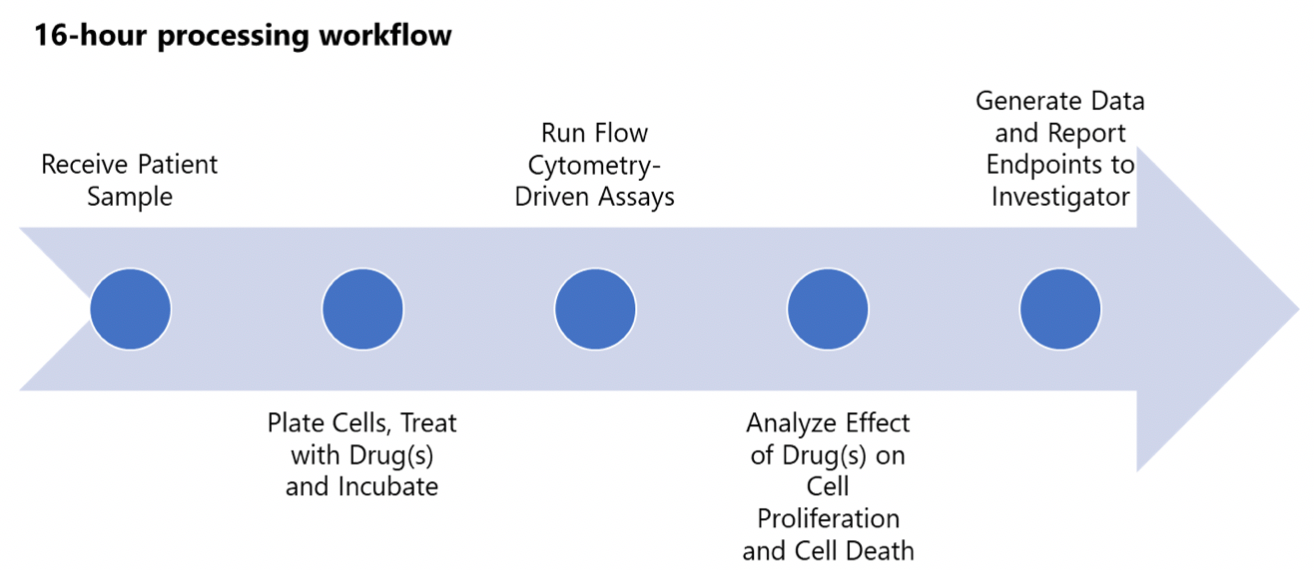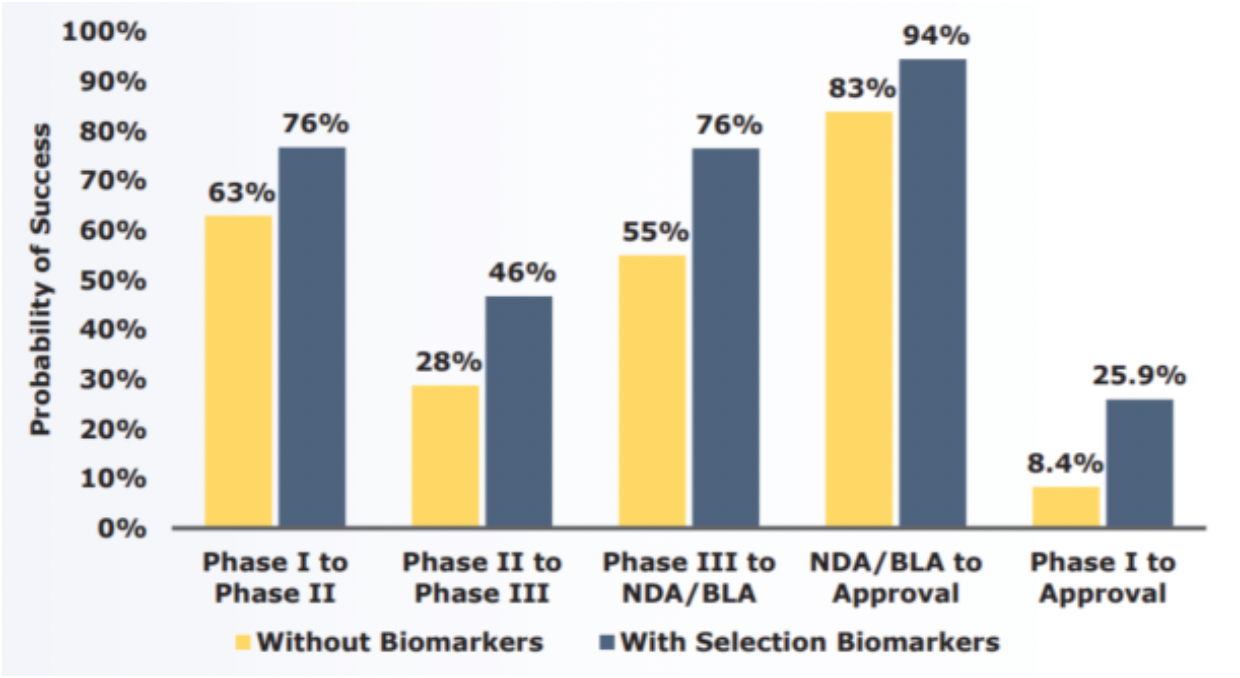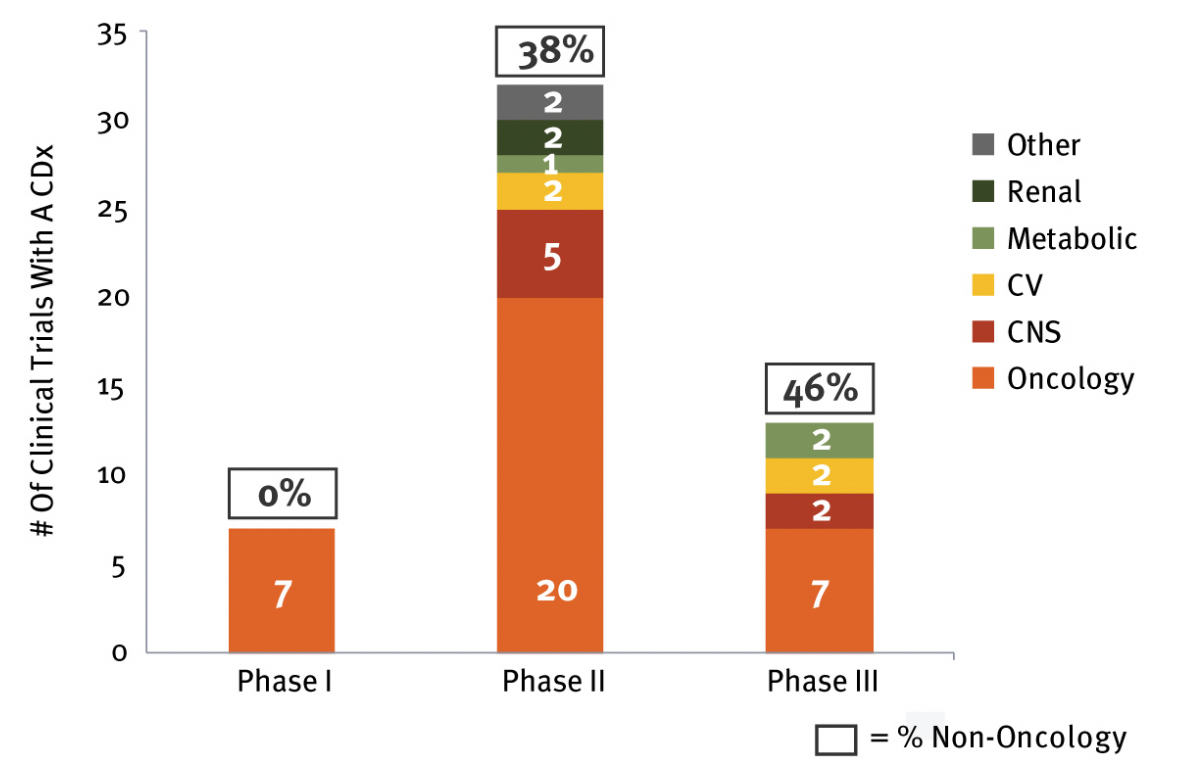Delivering on the Promise of Precision Medicine: The Critical Role of Specialty Labs
Darren Davis, Senior Vice President at Precision for Medicine, explores the need for specialty labs in cancer treatment plans.
The promise of precision medicine is the delivery of the right treatment to the right patient at the right time. Increasingly, oncologists are formulating cancer treatment plans based on insights from complex laboratory and imaging tests that characterize an individual patient’s tumor at a molecular level. However, the makeup of tumors can be quite complex and heterogeneous, even within a single patient and the effective use of molecular characterizations in informing cancer care requires an integrated framework for collecting, analyzing and interpreting tumor data.
Real-time patient stratification
In May 2019, Precision for Medicine, a Precision Medicine Group company, announced that it is providing its state-of-the-art laboratory services to perform drug assessment as part of a new personalized medicine clinical trial designed to identify the most effective therapies for individual patients with lymphoma. This novel study, conducted at The University of Texas MD Anderson Cancer Center9, utilizes Precision for Medicine’s Houston-based CLIA-certified laboratory (formerly ApoCell, Inc.) to conduct real-time stratification on a specially selected group of patients with B-cell lymphoma who have failed standard of care. The objective is to screen up to 30 different drug combinations for each patient to determine the most effective treatment for that individual.
Tumor cells are collected from each patient and samples are isolated and tested for response to specific therapies, with results generated within 24-48 hours and communicated back to MD Anderson.
Figure 1. Real-time patient profiling workflow

Using the insights derived from Precision’s lab testing, the investigators will be able to align patients with the best treatment for their individual tumor. This work is groundbreaking in that it leverages specialized laboratory services to inform personalized medicine in an accelerated timeframe. However, it is critical to point out that a study of this scope and scale is only possible with the right laboratory services partner:
- CLIA certification.This ensures that the laboratory has implemented quality standards to ensure the accuracy, reliability and timeliness of patient test results. This also helps with cross-site validation.
- Proximity to the study site.Given the need for viable cells, geographic proximity to the study site is essential.
- Ability to receive samples at any time of the day.The laboratory must have the flexibility and regulatory certifications to receive and process samples any time of the day, even after hours, so as not to limit the site’s ability to enroll a patient.
- Availability of highly-trained laboratory staff. Laboratory staff must have the expertise to process the samples and generate data in a quality-controlled environment. A study of this scope also involves cross-training of staff and implementation of standard operating procedures so all samples are consistent.
- Appropriate infrastructure. The laboratory must have the infrastructure to process the volume of samples received, from having sufficient instrumentation to having redundancy in platforms that have been rigorously cross-validated. This infrastructure may even include agreements with commercial airlines that enable transport of samples at any time of the day.
By individually screening up to 30 therapies for each patient, this approach has the potential to improve patient outcomes and truly deliver upon the promise of personalized medicine. If successful, this pilot study could be expanded to a larger population of patients, scaling its impact.
Partnerships such as the one forged between The University of Texas MD Anderson Cancer Center and Precision for Medicine may become more common as the field of precision medicine matures. As technology has evolved, the volume, variety and velocity of information has increased exponentially. To handle all of the data generated, we are also seeing advances in methods in improve data collection, storage, cleaning, processing and interpretation.1 Specialized laboratory services play a critical role in the quest to extract meaning from large datasets.
Momentum behind the need for specialty labs
Below are some clinical trial trends that are driving the need for specialized laboratory capabilities:
Immune cell profiling
With the advent of targeted therapies and immuno-oncology treatments, immune cell profiling has become an indispensable part of the oncology drug development process. Insights gained from profiling of the immune system can be used to optimize therapeutic design and treatment strategies, as well as to monitor disease progression and treatment response. Advanced laboratory techniques such as flow cytometry and epigenetic-based immune monitoring can be used to quantify and type immune cell populations in a multi-dimensional, high-complexity fashion.
Tumor molecular profiling
We are seeing pilot studies of real-time targeted molecular profiling across oncology therapeutic areas. In a recent study of newly diagnosed glioblastoma, researchers presented a comprehensive approach for utilizing molecular diagnostics at the time of diagnosis to generate insights in a clinically meaningful timeframe. This study involved complex multilayer molecular diagnostics, including whole-exome sequencing, low-coverage whole-genome sequencing, RNA sequencing, as well as microarray-based gene expression profiling and DNA methylation arrays. The researchers found that these molecular diagnostics were feasible, with a median turnaround time of 4-5 weeks. In 35% of cases, potentially relevant therapeutic decisions were derived from the data generated. In addition, the testing identified clonal alterations in individual tumors which constitute promising targets for targeted therapies.2
Biomarker analysis
As advances in analytical chemistry have enabled the precise, accurate measurement of analytes in bodily fluids and tissues, biomarkers have become integral to the practice of medicine. Biomarkers can now be used to address a myriad of questions about activity, safety, and efficacy throughout the drug discovery and development process. As targeted therapies and immuno-oncology therapies proliferate, biomarkers are increasingly relied upon for patient stratification and treatment selection.
Biomarkers can be broadly classified into three categories:
- Diagnostic biomarkers are biological parameters that aid in the diagnosis of diseases. These can be used to confirm eligibility for clinical trials.
- Prognostic biomarkers are used to identify the likelihood of a clinical event in patients who have the condition of interest. These are often used as clinical trial eligibility criteria to identify patients who are more likely to have disease recurrence or progression.
- Predictive biomarkers are used to identify individuals who are more likely to experience favorable or unfavorable effects from exposure to a therapeutic agent.3
Figure 2. Potential uses of biomarkers

A 2018 report revealed that drugs developed using a biomarker-guided precision medicine are more likely to reach the market, especially in oncology.4 The use of biomarkers as inclusion or exclusion criteria for clinical trial enrollment may be a powerful predictor of commercial success. In a BIO industry analysis which examined clinical development success rates from 2006 to 2015, programs that utilized selection biomarkers had higher success rates at each phase of development. This analysis revealed that the use of selection biomarkers led to a threefold increase in the likelihood of progressing all the way through to approval (see Figure 3).5 In fact, in 2018, a record 25 precision medicines were approved, representing 42 percent all of new drug approvals.6
Figure 3. Selection biomarkers increase likelihood of success
From David W Thomas, Justin Burns, John Audette, Adam Carroll, Corey Dow-Hygelund, Michael Hay. Clinical Development Success Rates 2006-2015. (2016) A BIO Industry Analysis white paper.

The evaluation of biomarkers requires integration of specialty lab data, such as flow cytometry, gene expression profiling, and immunosequencing, with pharmacokinetics, safety, and clinical data. It may also require development of a custom assay. Utilizing a centralized specialty lab rather than local laboratories for biomarker assay analysis may be beneficial for limiting the risk of variability which can result in inter-laboratory differences in methods, instruments, validation standards and quality control processes.
Companion diagnostic development
Part of the broader category of in vitro diagnostics, companion diagnostics are predictive biomarker assays that provide information which is considered necessary for the safe and effective use of a corresponding therapeutic. As of August 2019, the U.S. Food and Drug Administration (FDA) has cleared or approved 37 companion diagnostic devices, including both in vitro diagnostics and imaging tools.7 Drug manufacturers who are interested in developing a companion diagnostic for their therapeutic are tasked with developing an assay that is both analytically and clinically valid. Analytical validity indicates that the assay measures the intended biomarker, while clinical validity means that the assay measures how well the biomarker relates to the presence, absence, or risk of a disease. The majority of FDA-approved companion diagnostics also have clinical utility, which ties use of the diagnostic to a net improvement in health outcomes or useful information about the diagnosis, treatment, management, or prevention of disease. Development of a companion diagnostic-especially when codeveloped with a drug-is complex, and specialty labs play a critical role.
Figure 4. Use of companion diagnostics in oncology and non-oncology clinical trials8
As of March 2017. Image credit: inVentiv Health.

Circulating tumor cells
As tumors grow, cancer cells along the edges of the tumor may migrate into the bloodstream and circulate through both the blood and lymphatic system. These circulating tumor cells (CTCs) can continue in circulation, join with other CTCs, or become lodged in outlying tissues to form more tumors. Capturing CTCs from the blood or other bodily fluids is less invasive than performing surgical tumor biopsies, and CTCs can be used to detect clues about the underlying genetics of the cancer in the hope that this information leads to better diagnosis and treatment.
CTCs can be used for monitoring the pharmacodynamic effects investigational therapies. In order to do this, CTCs must be isolated from the blood and then enriched. This process requires specialized laboratory expertise to achieve high specificity with optimized recovery rates and purity, thus allowing for the most relevant enriched population of cells to be further characterized for proteomics, fluorescent in situ hybridization (FISH) / in situ hybridization (ISH), or transcriptomic analysis such as DNA microarrays, next-generation sequencing (NGS) and RNA sequencing. Transcription can even be investigated at the level of individual cells using single-cell transcriptomics.
Precision for Medicine has developed ApoStream, a proprietaryliquid biopsy technology to detect, isolate, and capture CTCs and other rare cells without the need for labels or antibodies. In addition, Precision for Medicine has been a pioneer in developing the technology for high-volume capture of CTCs to enable precision medicine in the clinical setting.
Value of specialty labs
Patient samples are a limited resource and, with the multitude of tests that may be performed on a single sample, specialized laboratory expertise is needed to optimize the data extracted. For example, Precision for Medicine offers an integrated laboratory services platform that enables the generation of both phenotypic and genomic information from the same biopsy sample.
When looking for a specialty lab partner for your drug development program, here are some factors to consider:
- Does the lab have the necessary equipment, resources, and expertise to support your program from preclinical through pivotal studies?
- Can the lab scale to meet your needs as you progress to later-phase clinical trials?
- Does the lab have the infrastructure to support real-time sample processing for all of your planned clinical trial sites?
- If your program requires a customized assay, does the lab have the expertise needed to develop and validate that assay?
- Is the lab capable of receiving and processing samples whenever needed?
- Does the lab have the information technology needed to analyze large datasets and to help establish synergies and interactions among these data?
Conclusion
Precision medicine relies on advances in clinical diagnostics which enable patient and tumor profiling that informs diagnosis, treatment, and monitoring. For example, advancements in NGS have made it possible to sequence an entire human genome in a single day, making it possible to identify specific cancer mutations and match patients to personalized therapies in a clinically meaningful timeframe. As we look to the future, we anticipate that an increasing number of studies will require processing of assays on a large scale and analysis of thousands of samples in a very short period of time. Specialty laboratories are critical for meeting this need and delivering on the promise of precision medicine.
Darren Davis, PhD, is the Senior Vice President at Precision for Medicine.
References
- Hulsen T, et al. From Big Data to Precision Medicine. Front Med (Lausanne) 2019;6:34.
- Pfaffe E, et al. Feasibility of real-time molecular profiling for patients with newly diagnosed glioblastoma without MGMTpromoted hypermethylation-the NCT Neuro Master Match (N2M2) pilot study. Neuro Oncol 2018;20(6):826-837.
- FDA-NIH Biomarker Working Group. Understanding Prognostic Versus Predictive Biomarkers. In: BEST (Biomarkers, Endpoints, and Other Tools) Resource. Silver Spring, MD: US Food and Drug Administration, 2016.
- TrialTrove | Pharmaintelligence, 2018. Data: 2012-2017. Adapted from The Economist Intelligence Unit. The Innovation Imperative: The Future of Drug Development Part I: Research Methods and Findings.
- Personalized Medicine at FDA: A Progress & Outlook Report. Personalized Medicine Coalition website. http://www.personalizedmedicinecoalition.org/Userfiles/PMC-Corporate/file/PM_at_FDA_A_Progress_and_Outlook_Report.pdf. Accessed September 18, 2019.
- List of Cleared or Approved Companion Diagnostic Devices (In Vitro and Imaging Tools). U.S. Food and Drug Administration Website. https://www.fda.gov/medical-devices/vitro-diagnostics/list-cleared-or-approved-companion-diagnostic-devices-vitro-and-imaging-tools. Accessed September 18, 2019.
- Lee J, Patel R, Ruch D. Companion Diagnostics: The Expanding Reach of Personalized Medicine. In Vivo website. https://invivo.pharmaintelligence.informa.com/IV005045/Companion-Diagnostics-The-Expanding-Reach-Of-Personalized-Medicine. Accessed September 18, 2019.
- https://www.mdanderson.org
- David W Thomas, Justin Burns, John Audette, Adam Carroll, Corey Dow-Hygelund, Michael Hay. Clinical Development Success Rates 2006-2015. (2016) A BIO Industry Analysis white paper. Available at
Unifying Industry to Better Understand GCP Guidance
May 7th 2025In this episode of the Applied Clinical Trials Podcast, David Nickerson, head of clinical quality management at EMD Serono; and Arlene Lee, director of product management, data quality & risk management solutions at Medidata, discuss the newest ICH E6(R3) GCP guidelines as well as how TransCelerate and ACRO have partnered to help stakeholders better acclimate to these guidelines.
Gilead Shares Final Data from Phase III MYR301 Trial of Bulevirtide in Chronic Hepatitis Delta Virus
May 7th 2025Long-term results from the study show 90% of patients with chronic HDV who achieved undetectable HDV RNA at 96 weeks of treatment remained undetectable for nearly 2 years post-treatment.